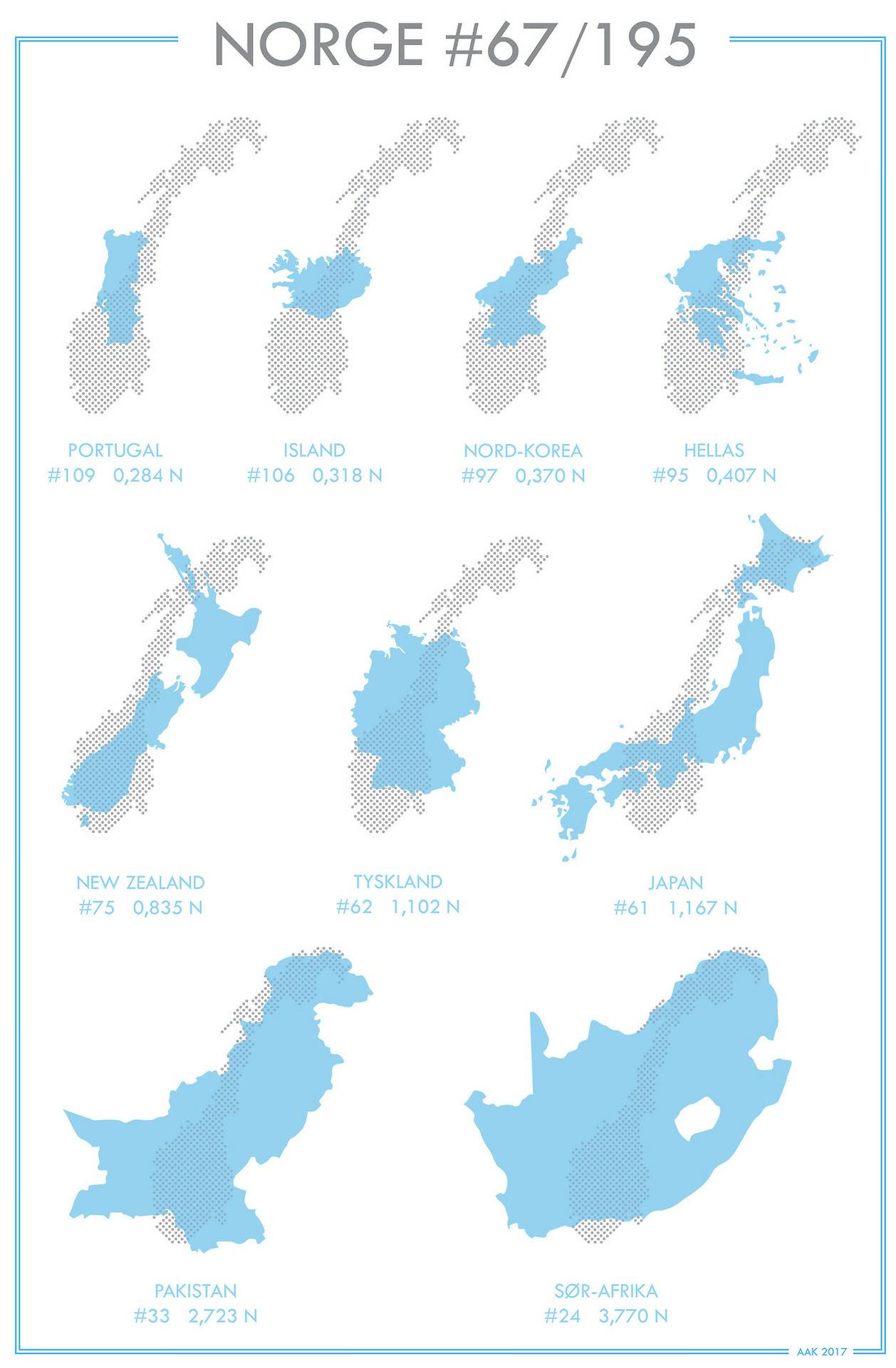Norway Compared to Other Countries Map


David Chen
Data Visualization Specialist
David Chen is an expert in transforming complex geographic datasets into compelling visual narratives. He combines his background in computer science ...
Geographic Analysis
What This Map Shows
The "Norway Compared to Other Countries Map" provides a visual representation of various attributes that define Norway in relation to its global counterparts. This comparison typically highlights metrics such as GDP, population density, land area, and even social indicators like education and health. By examining this map, we can gain a clearer understanding of Norway's position on the world stage and how it stands against similar nations.
Deep Dive into Norway's Geography and Demographics
Norway, renowned for its stunning fjords and rugged terrain, covers an area of approximately 323,802 square kilometers, making it one of the largest countries in Northern Europe. Interestingly, its population is around 5.4 million, which results in a relatively low population density of about 17 people per square kilometer. This is a stark contrast to many other European countries, such as the Netherlands, which has a density of over 400 people per square kilometer.
One of the most intriguing aspects of Norway is its demographic composition. The country boasts a high standard of living, consistently ranking among the top nations on the Human Development Index (HDI). In terms of education, Norway allocates a significant portion of its GDP—around 6.4%—to education, which is one of the highest rates globally. This investment has led to a highly educated populace, with nearly 40% of Norwegians holding a tertiary degree.
Economically, Norway is a powerhouse due to its rich natural resources, particularly oil and gas. The country has the largest oil reserves in Western Europe, which has propelled its GDP to one of the highest in the world—over $400 billion as of 2023. This wealth allows for robust social welfare programs, which include free healthcare and education. However, what's fascinating is that Norway is also leading the charge in sustainability, aiming to become a low-emission society by 2050. This initiative reflects a growing global concern about climate change and environmental sustainability, positioning Norway as a leader in the transition to green technology.
Regional Analysis
When we break down Norway's comparison with other countries on the map, several regions stand out. For instance, when compared to its Nordic neighbors, such as Sweden and Finland, Norway's GDP per capita is significantly higher due to its oil revenues. Sweden, while having a larger population of about 10 million, has a GDP per capita of roughly $55,000, compared to Norway's approximately $75,000. This economic disparity highlights the impact of natural resources on national wealth.
Another intriguing comparison can be made with countries like Switzerland, known for its banking and finance industries. Both countries exhibit high living standards, but Norway's reliance on natural resources contrasts with Switzerland's focus on innovation and services. The map may show that while both countries have similar GDPs, their economic foundations are quite different.
Additionally, when analyzing social indicators such as life expectancy and education levels, Norway often outperforms many countries in Europe and beyond. For example, the average life expectancy in Norway is around 83 years, which is higher than the global average and even exceeds that of the United States and the United Kingdom.
Significance and Impact
Understanding Norway's position compared to other countries is essential for several reasons. Firstly, it sheds light on how natural resources influence a nation's wealth and social programs. As Norway continues to invest in renewable energy and sustainable practices, this could serve as a model for other countries looking to balance economic growth with environmental responsibility.
Moreover, as global challenges such as climate change and social inequality become increasingly pressing, Norway's approach to governance and resource management might offer valuable lessons. The country’s emphasis on education and healthcare not only enhances the quality of life for its citizens but also contributes to a more stable and productive society.
In conclusion, the "Norway Compared to Other Countries Map" serves as a vital tool for understanding the multifaceted nature of Norway's geography, economy, and social structure. By examining these aspects in relation to other nations, we can better appreciate the complexities of global interdependence and the importance of sustainable development in achieving a better future for all.
Visualization Details
- Published
- October 28, 2025
- Views
- 20
Comments
Loading comments...